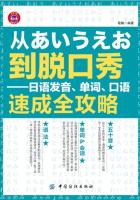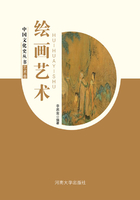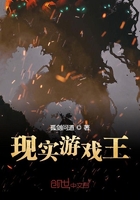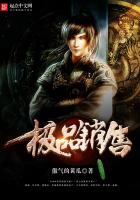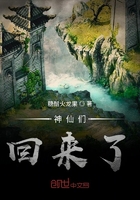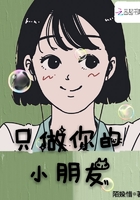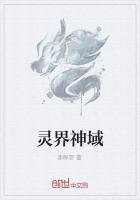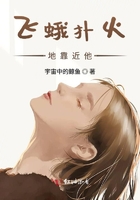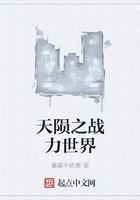Berry: OK. Here we go. Can you drive?
Frank: Yes, I got my drive license when I was nineteen.
Berry: Good. I think we can switch to drive.
Frank: That's Ok. Thank you.
弗兰克:打扰一下,可以搭个便车吗?
贝利:可以,去哪?
弗兰克:我正要去芝加哥。
贝利:好。我们顺路。上车吧。
弗兰克:请等一下,可以开下后备车厢吗?我放一下行李箱。
贝利:好的。我们走。你会开车吗?
弗兰克:是的,我19岁就拿了驾照了。
贝利:好。我想我们可以换着开车。
弗兰克:好的。谢谢你让我搭车。
要点提示:
give a lift 搭便车 head to 前往,行进
hop on 跳上;上车 wait a minute 稍等;等一等
switch to 转换;轮换 thumb a ride (做手势)要求搭车
save money 省钱;存钱 not big deal 没什么大不了;没事;别客气
经典二
Peter: Come on. I am thumbing a ride.
Robben: Hey, where do you want to go?
Peter: Hi, I am going to London. May I take a ride
Robben: Yeah. We're going in the same direction. Hop on!
Peter: Now, many young people travel as hitchhikers.
Robben: That's how to save money.
Peter: Well. A companion on the way is nice.
Robben: Thank you very much for giving me a ride.
Peter: Not big deal.
皮特:来吧,我在叫车呢。
罗本:喂,你要上哪?
皮特:嗨!我要去伦敦。可以搭个便车吗?
罗本:可以啊,我们往同一个方向。上车吧!
皮特:现在,很多年轻人以搭便车的方式旅行。
罗本:那是省钱的办法。
皮特:嗯,一路上有伴也不错。
罗本:谢谢您载我一程。
皮特:没什么大不了的。
词汇补给站
ride [ra?d] v. 骑;乘;旅程
Chicago [??'kɑ:g??] n. 芝加哥
destination [?dest??ne??n] n. 目标;目的地
unlock [??n'l?k] v. 开锁;开启
trunk [tr??k] n. 车后备箱
suitcase [?su:tke?s] n. 行李箱
switch [sw?t?] v. 转换;交换
thumb [θ?m] v&;n. 拇指;竖起拇指
direction [d?'rek?n] n. 方向;方位
hitchhiker [?h?t?ha?k] n. 搭便车的旅行者
companion [k?m'p?n??n] n. 同行;同伴
点滴文化情
Hitchhiking
搭便车旅行
Hitchhiking, also known as thumbing or hitching, is ameans of transportation that is gained by asking people,usually strangers, for a ride in their automobile or other roadvehicle. The latter may require many rides from differentpeople.
搭便车,也叫竖拇指搭乘或者搭车,是一种路上叫车的人或陌生人请求搭乘汽车或其他车的交通方式。对于其他路面交通工具,也许需要多次搭乘不同的车才能到达目的地。
A ride is usually, but not always, free. If the hitchhikerwishes to indicate that they need a ride, they may simply makea physical gesture or display a written sign. In North America,United Kingdom and most Western and Central Europe, thegesture involves extending the hitchhikers arm toward theroad and sticking the thumb of their outstretched hand upwardwith the hand closed. In other parts of the world, it is morecommon to use a gesture where the index finger is pointed atthe road.
搭车一般来说是免费的,但也不绝对。如果搭车人想搭便车,他们一般做手势或出示告示牌。在北美地区,英国和大部分西欧及中欧地区,肢体语言包括伸手臂,伸手并竖拇指,其他手指合拢。世界其他地区,喜欢食指指向道路,表示要求搭便车。
Itinerants have also used hitchhiking as a primary mode oftravel for the better part of the last century, and continue to doso today.
上世纪,传教士,旅行商也通过搭便车来旅行,现在还持续这种传统。
Section 63 交通堵塞 Traffic Jam
交通堵塞指一种车多拥挤且车速缓慢的现象,通常在假日或上下班尖峰时刻等时刻出现。交通堵塞的原因包括汽车增加;道路容量不足;道路交汇过多等。
口头应急句
1. Theres a lot of traffic on the roads.
路上车辆很多。
2. How can we avoid a traffic jam?
我们怎么样避免堵车呢?
3. Is the road ahead blocked?
前面的路塞住了吗?
4. I got stuck again on the highway.
我在高速路上堵了。
5. Buses are crowded in the morning.
早上的时候公交车很拥挤。
6. I am really fed up with traffic jams.
我对堵车真是烦透了。
7. I have to leave home at 7 o'clock in case of traffic jam.
我必须在7点出门,以免遇上交通堵塞。
8. This morning I was stuck on the bus for almost an hour.
今天早上,我在公交车上堵了半个小时。
9. There are traffic jams everywhere.
到处都是交通堵塞。
10.The traffic is very heavy now.
现在交通很拥挤。
11.It takes more time in rush hour.
在高峰时间,用时会长一些。
12.We can go this way to avoid a traffic jam.
我们走这条路,可以避免交通堵塞。
13.You can take the subway, which is more convenient.
你可以坐地铁,那样方便。
超经典情景对话链接
经典一
Cindy: What happened?
Jessica: We're stuck again.
Cindy: Why are we so unfortunate I am really fed up with traffic jams.
Jessica: Everybody here is in the traffic jam, not only you and me.
Cindy: But it's the fifth time in this week that we have been caught in thetraffic jam.
Jessica: It's not use complaining. It's the rush hour now.
Cindy: I'll be late again. Why are there so many cars on the road?
Jessica: Calm down, honey. Do you forget we are in New York?
Cindy: There is always traffic problem in big cities.
Jessica: So I've been used to the traffic jam.
Cindy: I'll take the subway tomorrow. It is much faster than driving cars.
辛迪:出什么事了?
杰西卡:我们又塞车了。
辛迪:我们怎么总是运气不好呢?我对堵车真是烦透了。
杰西卡:每个人都被堵在这里,不仅是你和我。
辛迪:但是这周我们已经第五次遇到塞车了。
杰西卡:抱怨也没用。现在是上班高峰期。
辛迪:我又要迟到了。路上怎么这么多车呢?
杰西卡:冷静一点吧,亲爱的。别忘了我们是在纽约。
辛迪:大城市总是有交通问题。
杰西卡:所以我已经习惯了塞车。
要点提示:
traffic jam 交通堵塞 be fed up with 对……恼火;厌烦rush hour (上下班)高峰期 calm down 冷静;镇静get off 离开;走开 be stuck in 使困于;停滞不前for a while 一会儿 country music 乡村音乐
经典二
Sean: Oh, damn. We got another traffic jam again.
Andy: How could it happen There are traffic jams on a 16-lane highwayevery day.
Sean: There are just too many people, and too many cars.
Andy: I wonder if there was an accident.
Sean: No, they just said it that too many people were trying to get off at theCapitol exits.
Andy: Well, let's put on some music. We're going to be stuck in this for awhile.
Sean: All right, what kind of music would you like?
Andy: How about some country music?
Sean: Yeah, all right.
肖恩:哦,真糟糕。我们又碰上堵车了。
安迪:怎么会这样?16车道的主干道天天堵车。
肖恩:因为人太多,车太多。
安迪:我想是否又出车祸了。
肖恩:不是,据说只是太多人转车到去国会大厦的出口。
安迪:哦。我们放点音乐吧。可能要困在这里一会儿。
肖恩:好吧。想听点什么?
安迪:乡村音乐,怎么样?
肖恩:好的,挺好。
词汇补给站
stuck [st?k] adj. 动不了的;被困住的
unfortunate [?n?f?:t??n?t] adj. 不幸的;倒霉的
traffic ['tr?f?k] n. 交通
jam [d??m] n. 拥挤;困境
complain [k?m'ple?n] v. 抱怨;诉苦
rush [r??] v. 急速行进;匆忙;涌动
subway ['s?bwe?] n. 地铁
calm [kɑ:m] adj. 镇定的;平静的
accident ['?ks?d?nt] n. 意外事件;事故
highway ['ha?we?] n. 公路;高速公路
wonder ['w?nd?(r)] v. 感到好奇;想知道
exit ['eks?t] n. 出口
country [?k?ntri] n. 乡村;乡下
点滴文化情
Traffic congestion
交通拥堵
Traffic congestion occurs when a volume of traffic or modalsplit generates demand for space greater than the availableroad capacity. This point is commonly termed saturation.
当交通总量所需空间大于道路容纳能力,交通拥堵现象就会发生。这种现象术语也叫交通饱和状态。
There are a number of specific circumstances which causeor aggravate congestion. Most of them reduce the capacity ofa road at a given point or over a certain length, or increase thenumber of vehicles required for a given volume of people orgoods.
有多种情况会引起或加剧拥堵。这些情况会在某种地点或某时间段减少道路交通的容纳能力,或增加交通车辆数目。





